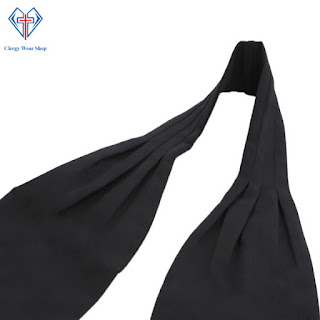Discovering the Cardinal Cassock: Style and Significance in Religious Attire
 |
| Cardinal Cassock |
The cardinal cassock, often seen adorning the figures of high-ranking clergymen and women within the Roman Catholic Church, is much more than just a piece of religious attire. It is a symbol of commitment, authority, and a deep history of ecclesiastical tradition. This blog explores the intricacies of the cardinal cassock both for men and Cardinal Cassock for women, its evolution, and its relevance in modern religious practices, while offering insights into the specific styles for men and women.
The History and Evolution of the Cardinal Cassock
The cassock, or soutane, has roots deep within the traditions of the Christian church, originating as a form of dress in the late Roman Empire. The term ‘cassock’ comes from the Latin 'casa', meaning 'house', which is a reference to the garment's original purpose as a house robe for clergy to wear in their living quarters. Over the centuries, the cassock evolved into a more formalized garment, indicative of clerical status and increasingly adopted for public religious functions.
Cardinals, being high-ranking officials in the church, traditionally wear a cassock that is distinctively red. This color, known as "cardinal red," symbolizes the blood of Christ and reflects the cardinal's readiness to defend the faith unto death. The specific style of the cardinal cassock has seen various changes through history, adapting to cultural and practical needs of the clergy.
Cardinal Cassock for Men
The traditional cardinal cassock for men is characterized by a series of 33 buttons down the front, representing the years of Christ's life. It is typically made from wool or silk, which ensures both comfort and durability for daily wear. Modern adaptations have seen lighter materials and even some blending of fabrics to accommodate various climates where cardinals may serve.
Features such as the fascia, a sash worn around the waist, and the pellegrina, which is a short shoulder cape, are also prominent. These Cardinal Cassock for Men are not just decorative but are imbued with historical and spiritual significance, each adding to the dignity of the wearer’s office.
Cardinal Cassock for Women
While traditionally most associated with male clergy, the cardinal cassock for women has become more prevalent with the increasing roles women are taking within the church administration. Women’s cassocks are tailored to suit feminine forms but maintain the same symbolic elements as those worn by their male counterparts. The cut and design offer modesty and ease of movement, with adjustments made in the length and fit to ensure comfort and appropriateness for various church functions.
Contemporary Use and Significance
In contemporary times, the cardinal cassock remains a powerful symbol of the wearer’s lifelong dedication to the church. It is worn at liturgies, official functions, and any occasion where a cardinal is representing the church. The cassock serves as a visual reminder of the solemn responsibilities that cardinals carry.
Moreover, it plays a crucial role during significant events like the conclave, where cardinals gather to elect a new pope. The visibility of the cardinal red helps in maintaining a sense of order and tradition during such pivotal moments in the church’s life.
New Developments and Innovations
Recent years have seen innovations in the materials and design of cardinal cassocks to adapt to modern needs. The introduction of breathable, lighter fabrics and even eco-friendly materials has been a significant development, reflecting the church's recognition of environmental concerns and the comfort of its clergy.
Additionally, with the rise of digital media and public appearances, the style of the Cardinal Cassock has been subtly updated to look more presentable on camera, ensuring that it carries the same gravitas in virtual spaces as it does in physical ones.
FAQs
Q1: Can anyone wear a cardinal cassock?
A1: No, the cardinal cassock is reserved for those who have been appointed as cardinals within the Roman Catholic Church. It is a specific garment that signifies a high level of ecclesiastical authority and responsibility.
Q2: How is a cardinal cassock different from a regular priest’s cassock?
A2: The most noticeable difference is the color; cardinals wear red, symbolizing their willingness to defend the faith to the death, whereas priests typically wear black. Additionally, the cardinal cassock is often made of finer materials and features specific embellishments like the fascia and pellegrina.
Q3: Are there any specific occasions where a cardinal cassock is required?
A3: Yes, cardinals are expected to wear their cassocks during all official ceremonies, liturgies, and when performing any duties related to their role as a cardinal. It is also commonly worn during the papal conclave.
Q4: How are cardinal cassocks for women designed differently?
A4: Women's cassocks are tailored to accommodate a feminine physique. While they retain the traditional color and symbolic buttons, adjustments in the cut, such as a more defined waist and adapted lengths, are common.
Q5: Where can one purchase a cardinal cassock?
A5: Cardinal cassocks are typically custom-made by specialty religious vestment suppliers. These suppliers often require verification of the buyer’s clerical status due to the garment's significance and restrictions.
Through understanding the cardinal cassock’s deep-rooted history and evolving contemporary relevance, we gain insights into not only a piece of attire but a profound symbol of devotion and identity within the Catholic Church. As styles and materials progress, the cardinal cassock continues to stand as a testament to tradition and a beacon of the cardinal’s sacred duties.




Comments
Post a Comment